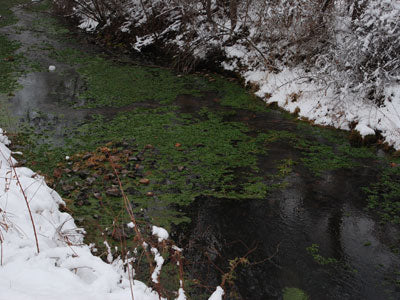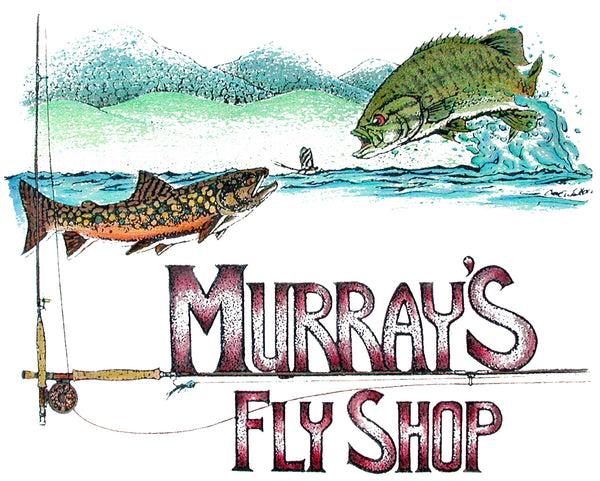
Stocked Trout Stream Fly Fishing Report - January 17, 2019
Share
As the trout streams become cold the trouts' metabolic need for food decreases greatly. Complicating this even further for those who like to fish for trout during the winter is that most of the aquatic insect activity decreases greatly. The exceptions are the shrimp and especially the cress bugs.
The natural habitat for both the shrimp and cressbugs are in the springs and just below them. At this time of the year these springs may be four or five degrees warmer than the water in the streams. Not only do the springs provide the heavy concentrations of these foods, their temperature prompt the trout to feed more actively.
These springs are easy to spot because of the rich green weed growth around them if they originate on the banks beside the streams and weed growth in the streams themselves where the springs flow into them. The influence of these springs upon the stream may reach downstream several hundred feet producing good fishing on the side of the stream from which the springs enter.

If the stream is 20 feet wide or less I start 200 feet downstream from the spring and wade upstream to fish it upstream using a dead drifting nymph tactic. The Shenk's Cress Bug size 14 and 16 and Murray's Shrimp size 12 and 14 are very effective. In order to detect these strikes I use the Murray's Trout Nymph Leader.
Watch the stream closely as you wade upstream because you can often see "tailing" trout as they feed on the cress bugs. Cast your Shenk's Cress Bug two feet upstream of a tailing trout then watch him closely in order to know when to set the hook.
Both Back Creek and the upper section of Big Stoney Creek have much of this excellent fishing.
